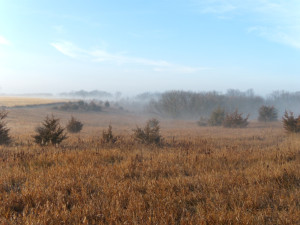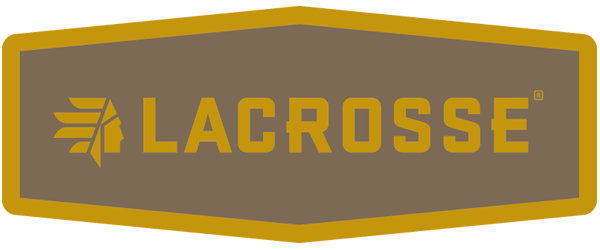 The time has come to get something to eat! No I’m not talking about going to the McDonalds for a value meal, I’m talking about finding a food plot and pulling up a chair for the late season. In my opinion the late season is the best time of the entire year to harvest a true giant. This doesn’t mean it is the easiest time of the year to hunt, quite the opposite, it is maybe the hardest. Here are a few ideas on where to look and what to do if you’ve pulled a late season tag.
The time has come to get something to eat! No I’m not talking about going to the McDonalds for a value meal, I’m talking about finding a food plot and pulling up a chair for the late season. In my opinion the late season is the best time of the entire year to harvest a true giant. This doesn’t mean it is the easiest time of the year to hunt, quite the opposite, it is maybe the hardest. Here are a few ideas on where to look and what to do if you’ve pulled a late season tag.
Because I’m lucky enough to live in farm country, I think of agricultural crops when I think late season food sources. Cruising back country roads with a good pair of binoculars or spotting scope and patience and you’re on your way to finding deer. Bring a tablet and a camera, you will need them. I use the tablet to hand draw crude maps of areas I find deer and chart the numbers of both does and bucks I find in each area. The camera isn’t used just for taking pictures of deer; I use it to take pictures of street signs, farm houses standing fields etc. the more information I can track the better.
 If you don’t have time to get out during prime viewing hours of the first or last hour of the day, you may need to spend some time finding those people that are out there during those time periods. Rural postal carriers, UPS or Fed-EX drivers, state road workers survey crews and so on are all good areas to check for good numbers of deer sightings. Another great tactic is to check with your local DNR or wildlife biologist office. They will have reports of areas with higher deer densities or complaints from resident farmers that may let you hunt to reduce population overloads. I have even checked with crop insurance agents, they too can be a great alley to finding land in late season farm country.
If you don’t have time to get out during prime viewing hours of the first or last hour of the day, you may need to spend some time finding those people that are out there during those time periods. Rural postal carriers, UPS or Fed-EX drivers, state road workers survey crews and so on are all good areas to check for good numbers of deer sightings. Another great tactic is to check with your local DNR or wildlife biologist office. They will have reports of areas with higher deer densities or complaints from resident farmers that may let you hunt to reduce population overloads. I have even checked with crop insurance agents, they too can be a great alley to finding land in late season farm country.
Once I have several potential areas that I know are holding deer the work begins. In the Midwest you will be looking at primarily private property, but that’s okay! Most farmers are more open to late season hunters because all other seasons are now over and there is very little if anyone hunting on these lands. Farmers are still seeing deer in their fields and know they will be feeding them all next year if they stay in the area. Don’t be afraid to ask permission; however don’t expect a yes from everyone!
 Plat map books are available from every county recorder’s office that will give you names of property owners and total acres of land they own. Cross check your hand drawn maps with the plat books and you now have a great place to start. In my opinion, land owners are much more receptive to a personal visit than a telephone call. Be prepared before you go! Have pictures available of some of the deer you have harvested, showing you have experience and know what to do. I always, always have list of references that I can share with prospective landowners. I encourage them to check with these other property owners as to my past or present ethics.
Plat map books are available from every county recorder’s office that will give you names of property owners and total acres of land they own. Cross check your hand drawn maps with the plat books and you now have a great place to start. In my opinion, land owners are much more receptive to a personal visit than a telephone call. Be prepared before you go! Have pictures available of some of the deer you have harvested, showing you have experience and know what to do. I always, always have list of references that I can share with prospective landowners. I encourage them to check with these other property owners as to my past or present ethics.
If you are lucky enough to gain permission to an area, make sure you get very clear instructions from the property owner as to boundary lines, livestock or forbidden areas within the property you should be aware of. I have often gained permission on lands that there are great numbers of deer, only to be told that I can harvest does only!! Always listen to the rules set by the land owner, there is no quicker way to be kicked out than to go against their wishes. I also encourage you to offer these land owners a portion of your prize if you are successful in harvesting an animal.
 This is no easy task, and there is no guarantee that with permission to hunt these lands that you will harvest a trophy buck. But with hard work and dedication you will be on your way to a better than average shot at a weary buck that is in need of replenishing much needed fat supplies to make it through the long winter ahead. If your goal is a mature buck, expect to be patient. Does and younger deer will always be the first into a field to feed. You may also encounter deer that have broken antlers and antlers that may have already been shed.
This is no easy task, and there is no guarantee that with permission to hunt these lands that you will harvest a trophy buck. But with hard work and dedication you will be on your way to a better than average shot at a weary buck that is in need of replenishing much needed fat supplies to make it through the long winter ahead. If your goal is a mature buck, expect to be patient. Does and younger deer will always be the first into a field to feed. You may also encounter deer that have broken antlers and antlers that may have already been shed.
One last thing….if you gain permission to hunt these sacred late season grounds, hunt the wind. Get in early in the afternoon and have an exit strategy in place. It will only take one lazy entrance or exit from these areas to blow your opportunity on already pressured hard hunted deer. Big bucks will not put up with such intrusions, and will either re-locate or go completely nocturnal.














